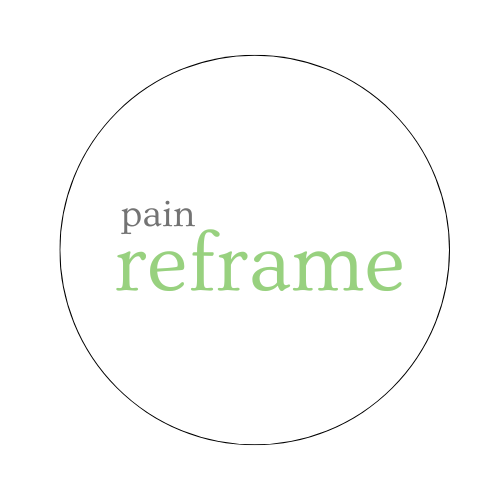When it comes to recovering from chronic pain, there is no ‘one-size-fits-all‘ approach. Some strategies might work well for one person, but not others. In the the list that follows, you will find some of the most effective, most well proven, strategies for improving chronic back pain.
Move often
- Exercise is an effective treatment for chronic low back pain 1–9
- Integrate more movement into your daily activitie10: e.g. walking, gardening, housework, cycling, gardening, stretching, kitchen dancing etc…
Learn about pain 11
- Learning about pain is therapeutic 12.
- When you understand why you hurt, you hurt less. Understanding pain changes pain. 12
- “Pain does not mean damage” 13.
- It is possible to have pain without any tissue damage.
Work on your mindset
- “Beliefs 14, thoughts, emotions and experiences affect pain” 13
- The presence of pain, its intensity, character, duration and frequency are potentially affected by how you think. This can include: the weather 12,13, beliefs 14, thoughts, emotions14 and experiences 13
Practice mindfulness 15–20
- Practicing mindfulness can reduce your pain 15,16, improve mood and mental health 21, improve sleep quality22, improve tolerance to cold 23, make exercise feel less difficult and more pleasant 24, improve your sporting performance 25–30, improve your balance 31–33, preventing injury 28 and benefit your “movement experience” 31 .
Address lifestyle factors
- Improved sleep hygiene, and stress management can improve chronic pain 34
- Quitting smoking can improve chronic pain 34
Better together…
- Combining two or more of these approaches has been shown to be even more successful than any one single approach 3,4,10,14,34–38
Improving pain initially means finding ways of living with it, so pain does not dominate everyday activities, or prevent a fulfilling and active life 39. Many of these strategies are discussed in more detail in the Pain Reframe course.
Produced by Nick Steele (www.PainReframe.com)
References
- Rainville, J., Nguyen, R. & Suri, P. Effective conservative treatment for chronic low back pain. in vol. 21 257–263 (Elsevier, 2009).
- Tian, S. & Zhao, D. Comparative effectiveness of exercise interventions for low back pain: a systematic review and network meta-analysis of 41 randomised controlled trials. The Lancet 392, S21 (2018).
- Exercise and Chronic Low Back Pain. International Association for the Study of Pain (IASP) https://www.iasp-pain.org/resources/fact-sheets/exercise-and-chronic-low-back-pain/.
- O’Connell, N. E., Cook, C. E., Wand, B. M. & Ward, S. P. Clinical guidelines for low back pain: a critical review of consensus and inconsistencies across three major guidelines. Best practice & research Clinical rheumatology 30, 968–980 (2016).
- Van Middelkoop, M. et al. Exercise therapy for chronic nonspecific low-back pain. Best practice & research Clinical rheumatology 24, 193–204 (2010).
- Hayden, J. A., Van Tulder, M. W., Malmivaara, A. V. & Koes, B. W. Meta-analysis: exercise therapy for nonspecific low back pain. Annals of internal medicine 142, 765–775 (2005).
- Fernández-Rodríguez, R. et al. Best Exercise Options for Reducing Pain and Disability in Adults With Chronic Low Back Pain: Pilates, Strength, Core-Based, and Mind-Body. A Network Meta-analysis. Journal of Orthopaedic & Sports Physical Therapy 52, 505–521 (2022).
- Malfliet, A. et al. Best Evidence Rehabilitation for Chronic Pain Part 3: Low Back Pain. J Clin Med 8, 1063 (2019).
- Owen, P. J. et al. Which specific modes of exercise training are most effective for treating low back pain? Network meta-analysis. Br J Sports Med 54, 1279–1287 (2020).
- Lehman, G. Recovery Strategies, pain guidebook. (2017).
- Moseley, Lorimer & Butler, David. Explain Pain. (Noigroup Publications, 2003).
- Moseley, G. L. & Butler, D. S. Explain pain supercharged. (NOI, 2017).
- Leake, H. B., Moseley, G. L., Stanton, T. R., O’Hagan, E. T. & Heathcote, L. C. What do patients value learning about pain? A mixed-methods survey on the relevance of target concepts after pain science education. Pain 162, 2558–2568 (2021).
- Brumagne, S., Diers, M., Danneels, L., Moseley, G. L. & Hodges, P. W. Neuroplasticity of Sensorimotor Control in Low Back Pain. J Orthop Sports Phys Ther 49, 402–414 (2019).
- Becker, J., McIsaac, T. & Cohen, R. Exercise vs. Mindful Movement for Chronic Neck Pain. Archives of Physical Medicine and Rehabilitation 99, e200–e201 (2018).
- Sohl, S. J. et al. A randomized pilot of eHealth mindful movement and breathing to improve gynecologic surgery outcomes. Journal of Psychosocial Oncology 41, 251–266 (2023).
- Kabat-Zinn, J. Mindfulness Meditation for Pain Relief: Practices to Reclaim Your Body and Your Life. (Sounds True, 2023).
- Cherkin, D. C. et al. Effect of Mindfulness-Based Stress Reduction vs Cognitive Behavioral Therapy or Usual Care on Back Pain and Functional Limitations in Adults With Chronic Low Back Pain: A Randomized Clinical Trial. JAMA 315, 1240–1249 (2016).
- Esmer, G., Blum, J., Rulf, J. & Pier, J. Mindfulness-Based Stress Reduction for Failed Back Surgery Syndrome: A Randomized Controlled Trial. Journal of Osteopathic Medicine 110, 646–652 (2010).
- Gardner-Nix, J., Backman, S., Barbati, J. & Grummitt, J. Evaluating distance education of a mindfulness-based meditation programme for chronic pain management. J Telemed Telecare 14, 88–92 (2008).
- Yang, C.-H. & Conroy, D. E. Momentary negative affect is lower during mindful movement than while sitting: An experience sampling study. Psychology of sport and exercise 37, 109–116 (2018).
- Yang, J. et al. Mindfulness-Based Movement Intervention to Improve Sleep Quality: A Meta-Analysis and Moderator Analysis of Randomized Clinical Trials. International Journal of Environmental Research and Public Health 19, 10284 (2022).
- Mugford, K., Barry, H., King, M., Ziv, G. & Carnahan, H. The effects of mindfulness and repeated cold exposure on cold tolerance and motor skill performance. International journal of human factors and ergonomics 8, 408–420 (2021).
- Gillman, A. S. & Bryan, A. D. Mindfulness versus distraction to improve affective response and promote cardiovascular exercise behavior. Annals of Behavioral Medicine 54, 423–435 (2020).
- Gooding, A. & Gardner, F. L. An investigation of the relationship between mindfulness, preshot routine, and basketball free throw percentage. Journal of Clinical Sport Psychology 3, 303–319 (2009).
- Bernier, M., Thienot, E., Codron, R. & Fournier, J. F. Mindfulness and acceptance approaches in sport performance. Journal of clinical sport psychology 3, 320–333 (2009).
- Liu, H.-Y. et al. Interactive effects on motor performance of mindfulness, performance under pressure, self-talk, and motor task characteristics. Perceptual and motor skills 129, 307–327 (2022).
- Zadeh, M. M., Ajilchi, B., Salman, Z. & Kisely, S. Effect of a mindfulness programme training to prevent the sport injury and improve the performance of semi-professional soccer players. Australasian Psychiatry 27, 589–595 (2019).
- Josefsson, T. et al. Effects of mindfulness-acceptance-commitment (MAC) on sport-specific dispositional mindfulness, emotion regulation, and self-rated athletic performance in a multiple-sport population: an RCT study. Mindfulness 10, 1518–1529 (2019).
- Thompson, R. W., Kaufman, K. A., De Petrillo, L. A., Glass, C. R. & Arnkoff, D. B. One year follow-up of mindful sport performance enhancement (MSPE) with archers, golfers, and runners. Journal of Clinical Sport Psychology 5, 99–116 (2011).
- Kee, Y. H., Chatzisarantis, N. N., Kong, P. W., Chow, J. Y. & Chen, L. H. Mindfulness, movement control, and attentional focus strategies: effects of mindfulness on a postural balance task. Journal of Sport and Exercise Psychology 34, 561–579 (2012).
- Sardeli, A. V., Sartori, C. R., Santos, W. M., de Freitas Brandão, A. & Chacon-Mikahil, M. P. T. Dispositional mindfulness influences the balance control in elderly. Journal of Innovation and Healthcare Management 2, 1–9 (2019).
- Mills, N. & Allen, J. Mindfulness of movement as a coping strategy in multiple sclerosis: A pilot study. General hospital psychiatry 22, 425–431 (2000).
- Lewis, J. & O’Sullivan, P. Is it time to reframe how we care for people with non-traumatic musculoskeletal pain? Br J Sports Med 52, 1543–1544 (2018).
- Sany, S. A., Mitsi, M., Tanjim, T. & Rahman, M. The effectiveness of different aerobic exercises to improve pain intensity and disability in chronic low back pain patients: a systematic review. Preprint at https://doi.org/10.12688/f1000research.75440.1 (2022).
- Moseley, G. L. A pain neuromatrix approach to patients with chronic pain. Manual therapy 8, 130–140 (2003).
- Nijs, J. et al. A Modern Neuroscience Approach to Chronic Spinal Pain: Combining Pain Neuroscience Education With Cognition-Targeted Motor Control Training. Physical Therapy 94, 730–738 (2014).
- Hall, A. et al. Physiotherapist-delivered cognitive-behavioural interventions are effective for low back pain, but can they be replicated in clinical practice? A systematic review. Disability and Rehabilitation 40, 1–9 (2018).
- Chaitow, L. How to Overcome Pain: Natural approaches to dealing with everything from arthritis, anxiety and back pain to headaches, PMS and IBS. (Duncan Baird Publishers, 2017).




0 Comments